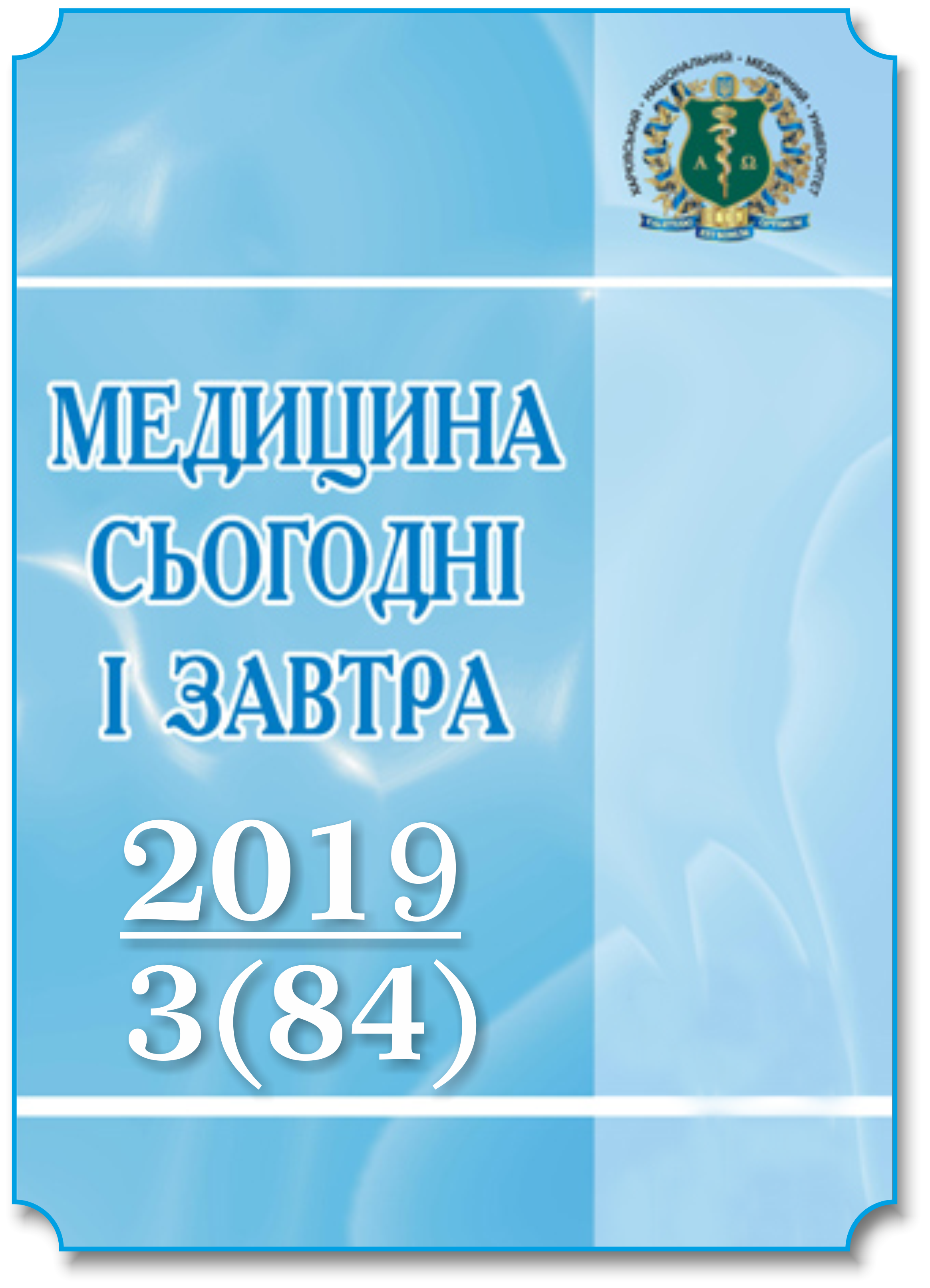Abstract
The results of examination and treatment by carotid endarterectomy method in 23 patients with atrial fibrillation and lesions of the carotid arteries in the State Institution «V.T. Zaitsev IGES NAMSU» from 2017 to 2019. Antiplatelet agents (aspirin were prescribed in 20 patients, clopidogrel were prescribed in 3 patients) were prescribed due to the presence of cardiovascular disease and previous myocardial infarction. No patient was found to have impaired cerebral circulation in the postoperative period. Tension hematoma was diagnosed in two patients and bleeding from soft tissues, which required revision of the postoperative wound with hemostasis, in one. It has been shown that patients with hemodynamically significant stenosis and unstable plaque of the carotid arteries most often develop atherothrombotic stroke. Patients with stenosis of the carotid arteries and rhythm disturbances should receive antiplatelet and anticoagulant therapy with blood pressure correction in the absence of bleeding.
References
Wolf P.A., Abbott R.D., Kannel W.B. (1991). Atrial fibrillation as an independent risk factor for stroke: the Framingham Study. Stroke, vol. 22, pp. 983–988.
Bunch T.J., Crandall B.G., Weiss J.P., May H.T., Bair T.L., Osborn J.S. et al. (2011). Patients treated with catheter ablation for atrial fibrillation have long-term rates of death, stroke, and dementia similar to patients without atrial fibrillation. J. Cardiovasc. Electrophysiol., vol. 22 (8), pp. 839–845.
Takigawa M., Takahashi A., Kuwahara T., Takahashi Y., Okubo K., Nakashima E. et al. (2014). Late-phase thromboembolism after catheter ablation for paroxysmal atrial fibrillation. Circ. J., vol. 78 (10), pp. 2394–2401, DOI 10.1253/circj.cj-14-0525.
Friberg L., Tabrizi F., Englund A. (2016). Catheter ablation for atrial fibrillation is associated with lower incidence of stroke and death: data from Swedish health registries. Eur. Heart J., vol. 37 (31), pp. 2478–2487.
Calkins H., Hindricks G., Cappato R., Kim Y.-H., Saad E.B., Aguinaga L. et al. (2017). 2017 HRS/EHRA/ECAS/APHRS/SOLAECE expert consensus statement on catheter and surgical ablation of atrial fibrillation: Executive summary. J. Arrhythm., vol. 33, issue 5, pp. 369–409, DOI 10.1016/j.joa.2017.08.001.
Adams H.P., Bendixen B.H., Kappelle L.J., Biller J., Love B.B., Gordon D.L., Marsh E.E. 3rd (1993). Classification of subtype of acute ischemic stroke. Definitions for use in a multicenter clinical trial. Toast. Trial of org 10172 in acute stroke treatment. Stroke, vol. 24, № 1, pp. 35–41, DOI https://doi.org/10.1161/01.STR.24.1.35.
Kitamura T., Fukamizu S., Kawamura I., Hojo R., Aoyama Y., Komiyama K. et al. (2016). Long-term efficacy of catheter ablation for paroxysmal atrial fibrillation in patients with Brugada syndrome and an implantable cardioverter-defibrillator to prevent inappropriate shock therapy. Heart Rhythm, vol. 13 (7), pp. 1455–1459.

